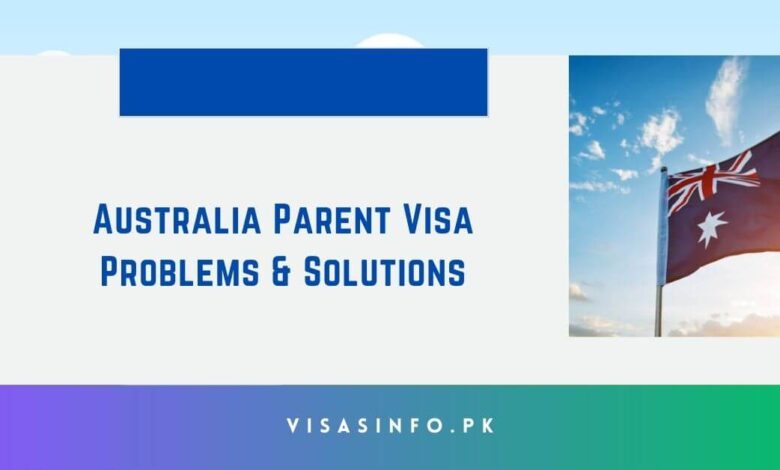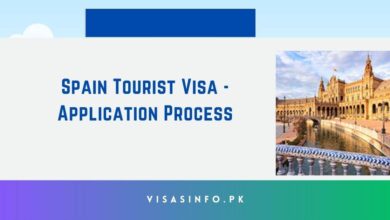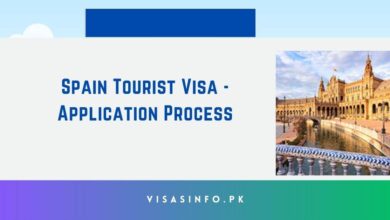Australia Parent Visa Problems & Solutions in 2024 – Check Here

This update will address the Australian parent visa inquiry. An assessment of Australia’s immigration laws was released in March by a three-person independent committee that was appointed by the Minister of Home Affairs. The council of four consisted of Dr. Martine Parkes, Professor Howe, and Mr. John Azaria.
Their report identified significant obstacles to family migration, with a particular emphasis on parent visas. The demand was increasing, while the supply was constrained. The demand for family migration, particularly parent visas, exceeds the supply of available spaces by a significant margin.
For example, the 2022–2023 migration program reserved only 8,500 parent visa slots, as opposed to 52,500 family visa slots. The backlog for parent visas increased from approximately 35,000 in 2010 to approximately 120,000 by 2022, with some applications necessitating a delay of up to 50 years.
Economic Concerns and Government Policy
Governments limit the number of Parent Visas issued due to concerns regarding the potential consequences of an elderly population on the nation. The government is responsible for the approximate AED 393,000 cost of each immigrant parent’s lifespan, as stated by Australia’s Treasurer. This has resulted in the current stringent visa regulations that are in place and has influenced the laws.
Alternative Perspectives
On the other hand, the Federation of Indian Organizations in Victoria argues that the parent visa should be regarded as a safety net that alleviates the financial burden on childcare providers and enables parents to advance in their professions.
Approximately 24% of parent visa holders contribute to the care of their grandchildren by permitting their children to enter the workforce, which has a ripple effect on the economy.
Suggested Reforms
This commission’s proposed modifications included:
- Using a lottery to resolve the backlog of visa applications
- Additionally, the Sponsored Parent Visitor Visa (SPVV) has been improved.
- Furthermore, offer parents transient migration alternatives as opposed to permanent ones.
In Australia, the actuality of parent visas is characterized by a multifaceted debate between the economy and the expectations of family. To effectively resolve these issues, the system’s overwhelming backlog and protracted waiting times necessitate significant modifications.
New Australia PR Pathway for 457 & 482 Visa Holders: Australia Immigration Changes
November’s fourth report on the latest advancements in Australian immigration legislation. The primary modifications to immigration laws are the subject of this update. The migration regulations of 1994 have been significantly altered by the Australian government, and they will be implemented on November 25.
These developments should be of particular interest to holders of subclass 457 visas (temporary work qualified) and subclass 482 visas (temporary skill shortage).
The Permanent Residency Pathway for 457 and 482 Visa holders
This adjustment is exemplified by the establishment of a pathway within the temporary residence transition streams for all 457 Visa holders and the additional 482 main Visa holders. Given this, there has been a significant change in the policy regarding permanent residency, which now considers a more diverse perspective.
Health Waivers and Occupational Lists Adjustments
Another essential element of these modifications is the inclusion of a health waiver for specific Visa streams, which enhances accessibility for the majority of applicants. Furthermore, the OCC employment lists for subclasses 186 and 187 have been modified to simplify the application process.
What are the repercussions for applicants and visa holders?
The changes comprehensive impact should be recognized by both new applicants and those with valid visas. Qualified workers who are anxious to work in Australia are beginning to be more empathetically treated by the Australian government.
In general, the alterations to Australia’s immigration laws can be interpreted as a preliminary step toward more open and flexible immigration policies. Holders of subclass 457 and 482 visas are predominantly affected by the aforementioned modifications, which simplify the process of permanent residency and reduce the number of qualifying requirements. This represents a substantial change in the Australian immigration system.
Check Also: Australia New Skills in Demand Visa -Visit Here
Benefits of
- Family Reunification: It facilitates the cohabitation of parents with their offspring who are Australian citizens or permanent residents, thereby fostering family unity and support.
- Long-Term Residency: The visa provides permanent residency status, allowing parents to remain in Australia indefinitely.
- Access to Healthcare: Medicare, Australia’s public healthcare system, is available to permanent residents and offers a variety of medical services at a reduced cost.
- Social Services: Parents have the opportunity to access a variety of social services, such as geriatric care and other community support services, which can improve their quality of life.
- Work Rights: While not all Parent Visas include work rights, those that do permit parents to work in Australia as a means of self-support.
- Pathway to Citizenship: Parents who have obtained permanent residency may be eligible to petition for Australian citizenship upon satisfying specific residency and other criteria.
- Educational Opportunities: Permanent residents can pursue education and training opportunities, which can be advantageous if they wish to enhance their skills or knowledge.
- Travel Flexibility: Permanent residents are permitted to travel within and outside of Australia without the necessity of obtaining a separate visa for each journey.
New Changes in Australia Immigration Bill 2024
In 2023, the immigration Bill in Australia was amended. In this update, we will provide you with the most recent modifications to Australia’s bridging visa requirements. The Amendment to Migration Bridging Visa Requirements The Migration Regulations of 1994 and the Migration Act of 1958 are to be updated by Bill 2024
The purpose of this is to ensure that non-citizens who have no realistic prospect of being removed from Australia shortly are no longer subject to immigration detention under Subsections 189 (1) and 196 (1) of the Migration Act, as per the High Court’s orders dated November 8, 2024.
Minister for Immigration, Citizenship and Multicultural Affairs (NZYQ)
Additionally, the bridging visa will be subject to the requisite conditions if it is granted to an individual who does not presently possess one. In simple terms, the bill’s objectives are to modify immigration regulations under NZYQ’s ruling and to preserve community safety.
The Australian government has implemented measures to fortify the BVR framework to facilitate the monitoring of the immigration status of individuals in this cohort. The primary focus is on the notices and reporting requirements associated with the BVR. Qualified non-citizens who are unable to be removed may lawfully remain in Australia until they are expelled under the BVR.
The Department of Home Affairs may implement a BVR if a member of the NZYQ cohort lacks the right to remain in Australia and is unlikely to obtain an additional visa. BVR necessitates that an individual participate in their expulsion from Australia. This measure will further tighten the obligations already placed on BVR holders to better reflect the present climate and the expectations of the Australian community regarding the management of non-citizens with BVRs, by the potential consequences of the rulings in NZYQ.
To effectively manage this aspect of the migration system, modifications must also be implemented to the Board of Violence Reduction Plan (BVR). This encompasses situations in which a non-citizen has committed severe crimes both within and outside of Australia and requires suitable and proportionate management during the immigration status determination process.
Furthermore, the Australian community anticipates that migration will be conducted systematically and that noncitizens will be required to assist with the preparations for immigration and deportation. Non-citizens who reside in Australian communities are expected to refrain from taking any actions that are intended to resolve their immigration status.
Consequently, it is recognized that the nation’s community is negatively impacted and that the authorities are impeded in their ability to manage the individual’s expulsion from Australia.
Frequently Asked Questions:
-
How much money do you need to sponsor your parents in Australia?
The fee is $4,895 for the main applicant, $2,445 for the dependent partner, and $830 for dependents under 18. Before the visa is granted, each applicant must pay a contributory fee of $43,600. We request this payment once we meet the health and police check requirements.
-
How long is a parent visa valid for Australia?
It allows parents to visit their family members in Australia, with the option of obtaining longer validity visas that permit stays of up to 12 months within 18 months. Alternatively, you could apply for a Sponsored Parent (Temporary) Visa, which allows those eligible to reside in Australia for 3 or 5 years.
-
Can I permanently bring my parents to Australia?
To apply for a parent category visa and live in Australia as a permanent or temporary resident, you must have a sponsor. Your sponsor must be an Australian permanent resident, Australian citizen, or eligible New Zealand citizen aged 18 or older.



